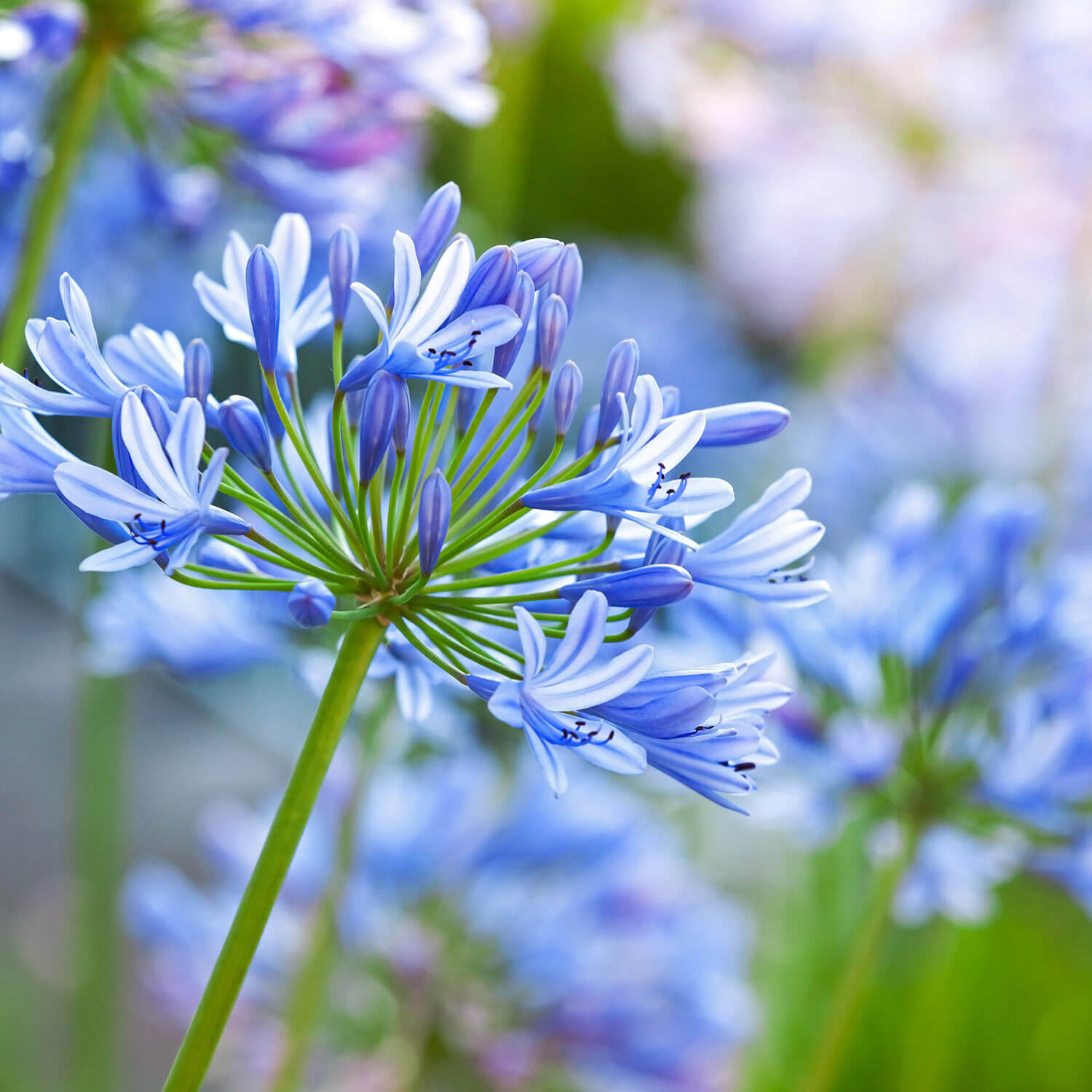Letting Loose the Secret to Successful Agapanthus Farming: Idea for a Flourishing Yard
In the realm of gardening, cultivating agapanthus efficiently requires a critical approach that incorporates various elements of plant care. By understanding the nuances of agapanthus farming, one can develop an atmosphere where these plants flourish and bloom perfectly.
Planting Agapanthus: Finest Practices
When growing Agapanthus, proper dirt preparation is necessary for ensuring successful growth and growth of these beautiful blossoms. Agapanthus, typically referred to as Lily of the Nile or African lily, grows in well-draining soil with a slightly acidic to neutral pH level - Agapanthus. Before growing, it is important to modify heavy clay dirts with raw material such as garden compost or peat moss to improve water drainage and provide vital nutrients for the plants
To grow Agapanthus, select an area that obtains full sunlight to partial color, as this will certainly advertise healthy and balanced growth and abundant flowering. Dig an opening twice the diameter of the plant's origin round and position the Agapanthus at the very same deepness it was previously expanding. Carefully backfill the hole with soil, pushing down firmly to remove any air pockets around the roots.
Water the freshly grown Agapanthus extensively and continue to maintain the dirt equally wet, specifically during the plant's active growing season. Agapanthus. Using a balanced plant food once a month can further sustain the plant's development and flowering. By following these best practices for planting Agapanthus, you can develop a sensational screen of these captivating flowers in your garden
Ideal Dirt Conditions for Agapanthus
For ideal development and flowering success of Agapanthus plants, ensuring the soil conditions are excellent is critical. Agapanthus likes soil that is abundant in nutrients, so incorporating a well balanced fertilizer during the growing period can advertise healthy development and vivid flowers.

Watering and Fertilizing Tips
To make sure healthy and balanced growth and vivid blooms, correct watering and fertilizing strategies are vital for successful Agapanthus growing. Agapanthus plants benefit from normal watering, specifically during the growing season.
When it involves feeding Agapanthus, a balanced fertilizer with equivalent parts nitrogen, phosphorus, and potassium can be applied in the spring to advertise healthy and balanced development and blooming. Slow-release fertilizers are perfect for supplying nutrients slowly over an extended duration. Stay clear of over-fertilizing, as this can cause too much foliage growth at the expenditure of blooms.
In addition, incorporating raw material like compost right into the soil can boost nutrient degrees and improve soil framework, helping in the overall wellness of the Agapanthus plants. By following these watering and feeding tips, Click This Link gardeners can guarantee their Agapanthus plants thrive and generate sensational display screens of flowers.
Pruning and Deadheading Strategies
Appropriate trimming and deadheading techniques play a vital duty in keeping the health and wellness and appearances of Agapanthus plants, enhancing the important methods of watering and fertilizing for successful cultivation. Trimming Agapanthus includes eliminating spent flower heads, yellowing or dead leaves, and overall shaping of the plant to advertise better growth. Deadheading, the process of getting rid of faded flowers, not just webpage improves the plant's look however also motivates additional growing.
When deadheading Agapanthus, it is advisable to snip off the flower stem at the base utilizing sharp, clean shears. This process redirects the plant's energy from seed manufacturing back right into root and foliage growth, advertising a healthier and extra durable plant. Normal deadheading can extend the blooming duration of Agapanthus and protect against self-seeding, which can lead to overcrowding.
In terms of pruning, Agapanthus generally advantages from a light trim after blossoming to clean the plant and urge fresh growth. Cutting down the spent blossom stems and removing any damaged or dead vegetation assists maintain the plant's vitality and total look. Nonetheless, it is necessary to stay clear of cutting into the crown of the plant, as this can damage its health and wellness.

Protecting Agapanthus From Pests and Diseases
Implementing effective pest and condition monitoring methods is important to protecting the wellness and vitality of Agapanthus plants in farming. Agapanthus are normally sturdy plants, yet they can still fall victim to various bugs and conditions if not effectively looked after. One typical insect that influences Agapanthus is the Agapanthus borer, a caterpillar that passages into the plant, creating damage to the blossoms and leaves. To protect against problems, routine inspection of the plants is necessary. If borers are spotted, they can be by hand gotten rid of, or insecticidal soap can be utilized as a control measure.
In enhancement to bugs, Agapanthus are prone to illness such as origin rot and fungal fallen leave spots. By remaining vigilant and attending to bug and condition problems quickly, garden enthusiasts can aid their Agapanthus thrive and prosper.

Verdict
To conclude, successful farming of agapanthus needs correct planting strategies, suitable soil problems, adequate watering and fertilizing, regular trimming and deadheading, and defense from conditions and pests. By adhering to these techniques and tips, gardeners can guarantee a growing garden filled with attractive agapanthus flowers. Agapanthus. Bear in mind to keep consistent care and interest to detail to promote the health and long life of these magnificent plants
When planting Agapanthus, proper soil preparation is necessary for making certain effective growth and advancement Go Here of these beautiful flowers.Water the recently grown Agapanthus thoroughly and continue to maintain the soil evenly wet, particularly throughout the plant's energetic expanding period.For ideal development and blooming success of Agapanthus plants, ensuring the soil conditions are excellent is crucial. When transplanting or growing Agapanthus, guarantee the dirt is well-prepared to give the required structure for the plants to establish themselves effectively. One common pest that affects Agapanthus is the Agapanthus borer, a caterpillar that tunnels right into the plant, causing damage to the leaves and flowers.